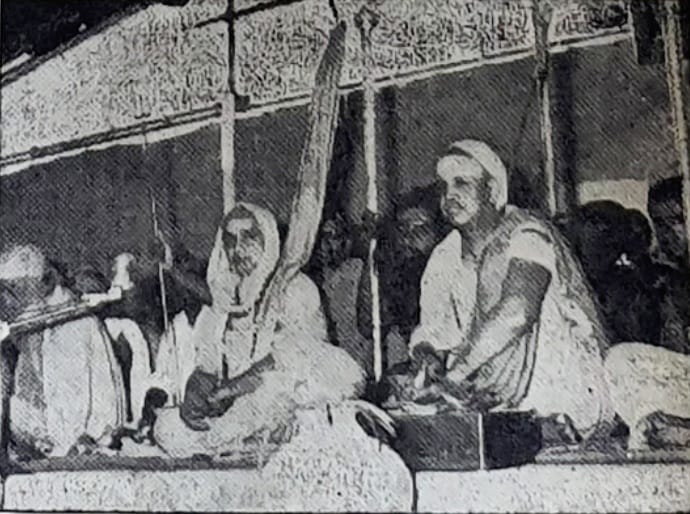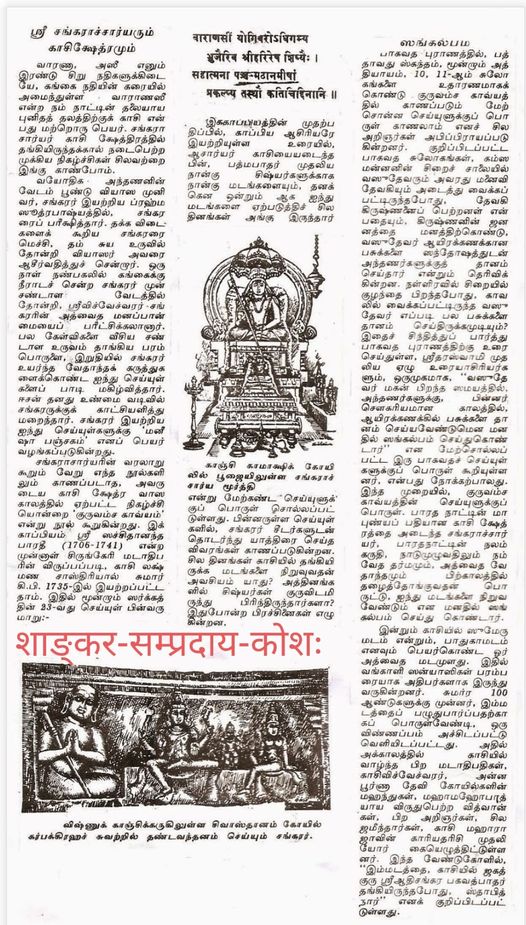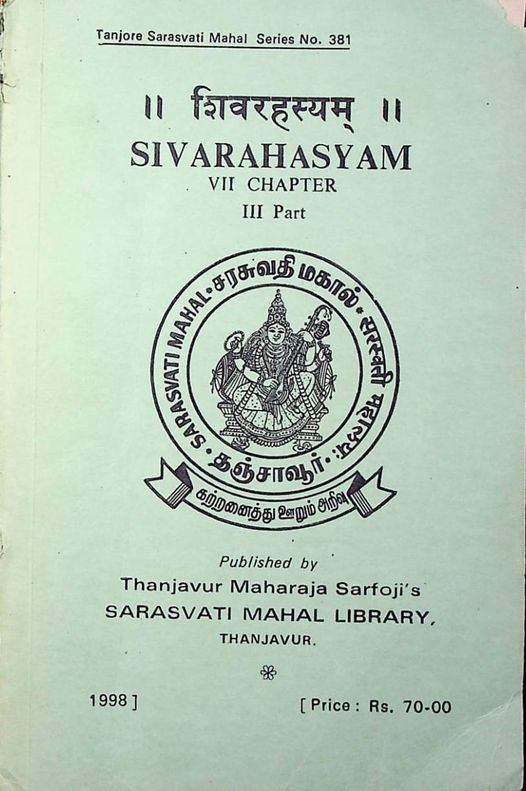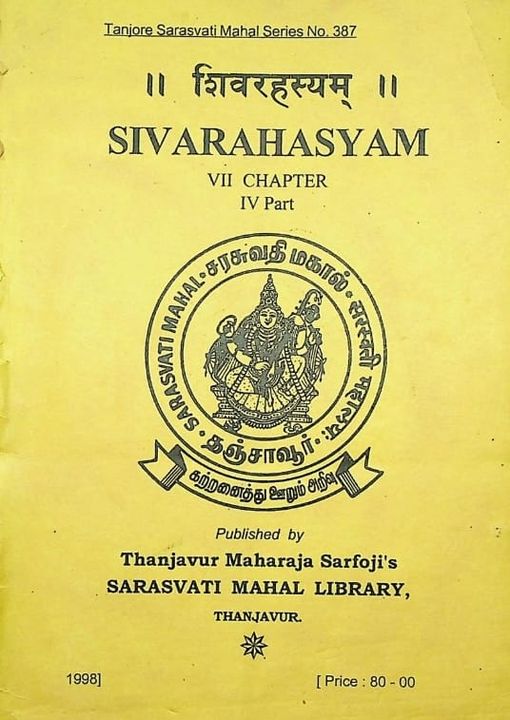His Holiness Jagadguru Shri Jayendra Sarasvati Swamiji of Shri Kanchi Kamakoti Peetam with the Jagadguru of Shri Govardhan Peetam, Puri, at the Conference of all Religions held in Puri Kshetra from 1st to 5th December, 1974.

His Holiness Jagadguru Shri Jayendra Sarasvati Swamiji of Shri Kanchi Kamakoti Peetam with the Jagadguru of Shri Govardhan Peetam, Puri, at the Conference of all Religions held in Puri Kshetra from 1st to 5th December, 1974.

(21.4.1988 அன்று தினமணி நாளிதழில் வெளியான கட்டுரை)ஸ்ரீசங்கராசார்யரும் காசி க்ஷேத்ரமும்
ஸ்ரீசங்கரபகவத்பாதர்கள் வாராணஸீ க்ஷேத்ரத்திற்கு விஜயம் செய்தபோது ஐந்து மடங்களை ஏற்படுத்த ஸங்கல்பம் ஏற்றனர் என்பது தொடர்பான வரலாற்றுத் தகவலுக்கு அடிப்படை ஆதாரம் துங்காச்சிருங்கேரி மடத்து அதிபர் உத்தரவின்படி 1735ஆம் ஆண்டு இயற்றப்பட்ட குருவம்ச காவ்யத்தில் காண்கிறது.
உண்மை இப்படியிருக்க, ஆம்னாய மடங்கள் நான்கு; ஆசார்யர்கள் நால்வர் மட்டுமே என்று குருவம்ச காவ்யம் இயற்றப்பட்டதற்குப் பிற்பாடு யாரோ அடையாளம் தெரியாத பண்டிதர் எழுதிவைத்த மடாம்னாய நூலைக் கொண்டு சாதிக்கச் சிலர் தொடர்ந்து முயன்று தோற்று வருவதும் நகைப்புக்குரியதே.
https://sankaramathas.blogspot.com/2015/03/21041988_29.html

Sri Sankara Bhagavatpada had darshan of His Preceptor Sri Govinda Bhagavatpada at a place (cave) on the banks of the Narmada river.
Later, as per the wishes of Sri Govinda Bhagavatpada, Sri Sankaracharya crossed the forests of Central India and in due course reached the sacred mokshapuri of Varanasi where he stayed on for a pretty long time.
His illustrious commentaries on the Brahma-Sutras, the Upanisads, the BhagavadGita, the Vishnu – Sahasranama, the composition of the smaller pieces such as the Gangashtaka, the Manisha panchaka etc., are assigned to the period of His Stay at Kashi.
A verse in the Guruvamsa Kavya, remarks on the manuscript of this Kavya in the Annual report of the Mysore Archaeological Department for the year 1928 (Govt. Press, Bangalore) and an inscription in the Brahmendra Matha at Sivalaya Ghat in Varanasi clearly indicate Sri Sankara Bhagavatpada’s establishing religious institutions in the form of Mathas at important places which He visited or wherein He stayed for long.
The Guruvamsakavya speaks of the Acharya’s founding of *five mathas* at Varanasi, four for His principal disciples and one for Himself.
” वाराणसीं योगिवरोऽधिगम्य भुजैरिव श्रीहरिरेष शिष्यैः ।
सहात्मना पञ्चमठानमीषां प्रकल्प्य तस्थौ कतिचिद्दिनानि “II
-(Verse 23-Canto III).
On pages 15 to 20 of the Annual Report of the Mysore Archaeological Department mentioned above, the following remarks on the Guruvamsakavya are found:-
” It follows that the author was the contemporary of Somasekhara II (1714-1739) of Keladi when Sacchidananda Bharati (1705-1741) adorned the pontifical seat at Sringeri.
(Kashi) Lakshmana Sastri, the author, seems to have been a very good scholar and as he composed the work under the orders of Sachchidananda Bharati. It may be reasonably presumed that he faithfully copied all available traditional information about the successive teachers of Sringeri “.
On page 16 of this Report the founding of an important Matha at Varanasi by Sri Sankaracharya is noted-
” The author says that He (Sri Sankaracharya) set up five Mathas and mentions the names of Sringeri, Kanchi, Badri, Kashi and Jagannatha.”
The following inscription in the Brahmendra Matha in Varanasi (referred to earlier) points to a line of Acharyas belonging to Sri Sankara Bhagavatpada Parampara:—
” जगद्गुरो शंकरस्य पारम्पर्यक्रमागतः ।
शिष्यः सन्मार्गनिष्णातः चन्द्रशेखर नामकः ।
तस्य शिष्यो विश्वनाथयतीन्द्रो योगिनां वरः ।…”
(1/2)


The twentieth Chapter (Seventh Amsa) of the Shivarahasya speaks of the greatness of Kanchi and the Kotitirtha mahatmyam and Ekamreshvara and how praying to Shri Kamakshi and Ekamranatha removes all papas.
It is also noteworthy to add here that there is a Vishveshvara temple and a Muktimandapa on the banks of Sarvatirtha just as there is in Kashi.
Shiva says, “O Devi! Where Vegavati nadi flows, there is a city named Kanchipuri. There even Brahma and other devas always desire to live. My lingasvarupa named Ekamresha is there, the darshana of it removes all papas instantaneously”.
देवि काञ्चीपुरी काचिद्यत्र वेगवती नदी ।
तत्र वासमपेक्षन्ते नित्यं ब्रह्मादयः सुराः ॥
एकाम्रेशाभिधं लिङ्गं तत्रास्त्येकं मदात्मकम् ।
तद्दर्शनेन पापानि विनश्यन्ति क्षणादिव ॥
Vishnu details the story of a famine that lasted for many years.The Rshis went to Gautama and Gautam due to his tapobala created food. The Rshis then created a fake cow to eat the nivara dhanya and sent it to Gautama. Seeing the cow, Gautama Maharshi threw a blade of grass and the cow fell down and Gautama thought he had committed gohatya.
Later knowing the action of the Rshis, he cursed them that they will lose shraddha in the vedokta bhasma and rudraksha dharana, Somavara vrata, Shivaratra vrata and even faith in Kashivasa and lose Shivabhakti. The Rshis were crestfallen.
Vishnu then continues that all efforts must be taken not to attain this state of “ashaankaratva” and one must do Shivapuja. He further instructs Brahma to worship knowing that this devi of divine form the mother of Brahma, Vishnu, Shiva and Indra as Kamakshi.
ब्रह्मविष्णुशिवेन्द्रादिजननी दिव्यविग्रहा ।
कामाक्षीति विचार्याब्जसम्भवैनां प्रपूजय ॥
Thus Shiva concludes that Brahma as instructed by Vishnu staying in Kanchipuram worshipped me, Ekamranatha with great effort.
महादेव उवाच
इत्युक्तो विष्णुना ब्रह्मा मामेवैकाम्रनायकम् ।
सम्पूज्यातिप्रयत्नेन काञ्चीवासं चकार ह ॥ (2/3)

Shivarahasyam is rightly called an itihasa ratnam and it imparts Shiva bhakti. It begins with Skanda expounding the efficacy of Shivabhakti to Jaigishavya muni.
This voluminous text has 18 parvas and around 1,00,000 slokas making it longer than the Mahabharata. The work is divided into 12 amsas and 1000 adhyayas/chapters. This voluminous work though existing in manuscript form was not printed by the Sarasvati Mahal until 1932 and Shri Chandrashekharendra Saraswati Mahaswamigal expressed anguish that the chances of this rare itihasa getting lost is inevitable. Then the Saraswati Mahal took efforts and printing the Shivarahasyam manuscript which was procured from Varanasi by the Maharaja of Tanjore.
